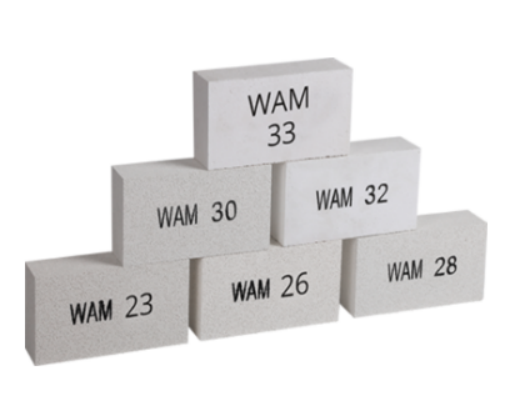The Best Solution For Energy Saving And Reducing CO2 Emission
The Best Solution For Energy Saving And Reducing CO2 Emission
 Tel: +86-532-85717690/85717352/85832089
Tel: +86-532-85717690/85717352/85832089 E-mail: wam@wamcn.net
E-mail: wam@wamcn.net
Do you know that insulating fire brick is a special type of brick that belongs to thermal insulation bricks? Yes! Insulation fire brick, commonly known as IFB, is a special thermal brick with over 800º C temperature.
It is a refractory product whose application is more than 800ºC and over 45% total porosity. They are commonly used in lab kilns, shuttle kilns, or tunnel kilns. Moreover, they can use in petrochemical plants, treatment furnaces, and lining of the combustion chamber.
When you team up with a reliable manufacturer of insulating fire bricks from a reliable and reputable manufacturer, you are sure of your investment. Read on as we take you through the nitty-gritty of this special building bricks.

We have special materials that are suitable for this kind of brick. The major materials are:
· Silicate bricks
· Aluminum silicate
· Lightweight corundum
Aluminum silicates happen to be the most used insulating fire brick. It has a chemical composition that has a straight influence on the grouping of the refractory bricks. Generally, the higher the content of alumina and the temperature of the insulating firebrick, the higher it's the grouping of temperature.
Anorthite refractory bricks make use of materials such as SiO2, Al2O3, and CaO.CaO. Raw materials comprise mullite, kyanite, clay, corundum, sillimanite, kaolin, andalusite, chamotte, and alumina hydrate.
Materials like corundum and alumina hydrate have high-temperature classifications. That is why they are used as a hollow spheres. The pore shape, total porosity, and pore size distribution determine the thermal conductivity of the material.
We have various ways to group or classify insulating fire bricks. The main grouping options are ISO 2245 / EN 1094-2 and ASTM C155. The grouping options are based on the bulk density and temperature of the material.
We use classification temperature (CT) and bulk density of the material to group materials here. After 24 hours of firing the material at classification temperature, the shrinking of the material may not go beyond 2%.
Group | Shrinkage<2 % after 24 hours (ºC) | Maximum density (Kg/m3) |
33 | 1790 | 1522 |
32 | 1730 | 1522 |
30 | 1620 | 1089 |
28 | 1510 | 961 |
26 | 1400 | 865 |
23 | 1230 | 769 |
20 | 1065 | 641 |
16 | 845 | 545 |
In the classification of refractory bricks according to ASTM C155, we use bulk density and classification temperature of the material to group them. The temperature for testing this material is 30k below CT (classification temperature).
Group | Shrinkage<2 % after 24 hours (ºC) | Maximum density (Kg/m3) |
180 | 1800 | 1.6 |
170 | 1700 | 1.35 |
160 | 1600 | 1.15 |
150 | 1500 | 0.95 |
140 | 1400 | 0.90 |
135 | 1350 | 0.85 |
130 | 1300 | 0.8 |
125 | 1250 | 0.75 |
120 | 1200 | 0.7 |
115 | 1150 | 0.7 |
110 | 1100 | 0.7 |
105 | 1050 | 0.65 |
100 | 1000 | 0.65 |
95 | 950 | 0.65 |
90 | 900 | 0.6 |
85 | 850 | 0.55 |
80 | 800 | 0.5 |
75 | 750 | 0.4 |
Investing in quality materials is very essential for quality project delivery. As a key player in the industry, we produce quality insulating fire bricks that meet the needs of our customers. Kindly contact us today for your quality bricks by clicking here.